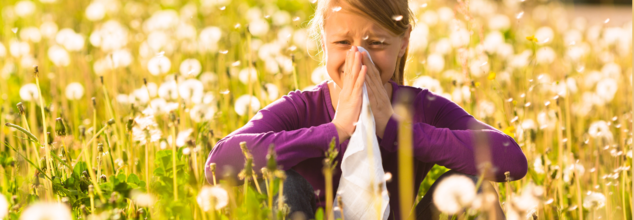
Credit: Canva
Women Are Overmedicated Due To Male-Dominated Drug Trials: Study
Women are frequently overmedicated, which leads to an increased risk of adverse side effects, a recent study conducted by scientists from the University of Chicago and the University of California discovered. This discrepancy arises because drug dosages are typically based on trials conducted predominantly on male subjects. "Drugs are optimized from the beginning to work on male bodies," explained Professor Brian Prendergast, a psychologist at the University of Chicago and co-author of the study. He also added that there was a need to immediately reevaluate the widespread practice of prescribing the same doses to men and women.
Side-Effects Range From Nausea To Seizures
It has long been recognized by scientists and medical professionals that women experience more side effects from medications than men, even when doses are adjusted for body weight. These side effects can range from mild symptoms such as headaches and nausea to more severe reactions like bleeding and seizures. Historically, women were excluded from clinical drug trials due to the mistaken belief that hormonal fluctuations would distort test results.
'Biomedical Science Is Done On Men, By Men'
"For much of the time it’s been practiced, biomedical science has been done by men, on men," said Prendergast. "It even starts in the petri dish: Most cell lines used in early tests are male, and then drugs are tested on male lab animals."It is pertinent to note that since 1993, the National Institutes of Health has mandated the inclusion of both men and women in clinical trials, with stricter enforcement following a pivotal 2014 study co-authored by Prendergast. That study demonstrated that hormonal cycles in female mice did not interfere with drug testing outcomes.
Despite these regulations, women remain underrepresented in many drug trials, and studies that do include them often fail to analyze or publish sex-specific data. Moreover, numerous medications approved before the 1993 mandate remain in use without adjustments for sex-based differences in drug metabolism.
Study Identifies 86 Drugs With Sex Difference
The study was published on June 5 in the journal Biology of Sex Differences. For the trials, Prendergast and co-author Irving Zucker of UC Berkeley analyzed publicly available data from clinical drug studies. They identified 86 drugs that exhibited clear sex differences in metabolism. The findings revealed that women metabolize nearly all these drugs more slowly than men, resulting in prolonged exposure and, in 96% of cases, significantly higher rates of adverse side effects.
The medications examined include widely used drugs such as aspirin, morphine, and heparin, along with common antidepressants like sertraline and bupropion.
While every individual metabolizes medications differently, women generally retain drugs in their bloodstream and tissues longer than men. The liver and kidneys also process drugs at varying rates between sexes, an effect that persists even when dosage is adjusted for body weight.
“The reasons for these big differences are not fully understood, but this is a really striking result and a wake-up call,” Prendergast stated.
Study Proposes Several Recommendations
To address this issue, the study’s authors propose several recommendations. They advocate for the FDA to disclose the gender composition of study participants in clinical trial data, label drugs known to have sex-based metabolic differences, and ensure that this information is integrated into medical education.
"There are a lot of drugs that are prescribed on a ‘one-size-fits-all’ basis, and it’s clear that this doesn’t always work," Prendergast emphasized. "Especially for drugs that we already know have a wide therapeutic range—meaning a broad range of doses can be effective—we could do a much better job of adjusting dosages based on sex."
This approach would involve starting women on lower doses and gradually increasing the amount until achieving optimal efficacy with minimal side effects. "We have an opportunity to do this better," Prendergast concluded. "This information needs to be widely available."

Credit: Canva
Tongue Scraping Is Trending—But It Could Turn Lethal For Your Heart
Tongue scraping has become a global trend in dental hygiene. Popularised by social media influencers, this particular dental practice has seen a 54.6% surge in Google searches over the last five years, all thanks to its marketing. However, experts are now sharing serious warnings about the growing popularity of tongue scraping. They have argued that it can create small, invisible cuts in tongue tissue, allowing bacteria direct access to the bloodstream. For someone with a heart valve issue, this could potentially lead to endocarditis, which has a mortality rate between 15 and 30%.
Patients with heart valve issues should be particularly cautious about any oral care tools that could introduce bacteria into the bloodstream. As per experts, these tools could also pose risks to people with abnormal cardiac valves, pacemakers, or other intravascular devices.
10-30% Of Americans Tempted To Try Tongue Cleaners
Despite the risks, many people turn to tongue scrapers in hopes of eliminating bad breath. "Statistics collected over the past decade show between 10–30% of Americans report bad breath and may be tempted to try tongue scrapers marketed as a solution," Loveland said.
However, he warned that aggressive scraping to remove food debris could do more harm than good. In some cases, patients have reportedly developed severe infections shortly after beginning regular tongue scraping. One such report came from Prince Charles Hospital in Australia.
UCLA Health experts have also cautioned against the trend, stating that “brushing or scraping the tongue adversely affects the numbers and diversity of the oral microbiome,” which could potentially lead to health problems like hypertension.
Loveland also raised concerns about tongue scrapers giving users a false sense of security. "These [issues] need professional assessment and treatment, not just masking symptoms with a tongue scraper,” he said. "If bad breath persists, consider consulting a dental professional rather than self-treating with tongue scrapers.”
Not Everyone Is Against Tongue-Cleaners
Not all experts agree, though. Some, like Cleveland Clinic dental hygienist Tenika Patterson, see value in the practice. “Tongue scraping can do a better job at removing that plaque and bacteria off the tongue’s surface,” Patterson said. “Brushing is OK to do, but think about it this way — if your carpet is dirty and you scrub it, the dirt’s going to get embedded down in there. But if you scrape it, it’s going to come right off the surface.”
Studies also suggest that tongue scraping may be more effective than brushing alone when it comes to reducing bacteria and eliminating bad breath.
Still, Loveland recommends a gentler, more traditional approach. “For those concerned about tongue health, gently brushing your tongue with your toothbrush after you’ve finished cleaning your teeth provides adequate cleaning without the risks associated with scrapers,” he advised.
'It is much safer than a rigid scraper as softer bristles are less likely to cause trauma to the delicate tissues, while still removing food particles and dead cells that may contribute to bad breath." He concluded by stressing the basics: brush your teeth twice daily, floss regularly, and schedule routine dental check-ups for optimal oral health.

Credits: Canva
Amid Rising Pollen, Britons Advised To 'Keep Windows Shut Between 10am–3pm' To Prevent Hay Fever
As birch pollen peaks throughout the UK this spring, health experts are warning of the worsening hay fever season and advising key protective measures. Spring in the UK isn't all about flowers blooming and sunshine, it's also the height of hay fever season. Health experts and the UK Met Office now implore residents across the country to take an unprecedented but crucial step- shut windows and doors between 10am and 3pm, especially in areas of high pollen. It comes after a sudden increase in tree pollen, particularly birch, which is forecast to hit "very high" levels in many areas this week.
Pollen counts in the air usually rise from mid-morning to mid-afternoon. During that window, when the sun becomes more intense and wind speeds increase, pollen becomes airborne and is more prevalent. Sealing your doors and windows during this time frame can greatly reduce your exposure.
“It’s extremely beneficial to keep windows and doors closed during certain hours of the day, particularly when it’s windy,” explained a Met Office spokesperson. “Right now, we’re in tree pollen season, with birch being the most dominant and allergenic.”
These alerts are based on ideal conditions for pollen dispersal: warm, dry weather, low rainfall, and wind. Unfortunately for allergy sufferers, that’s exactly what the UK has experienced in recent weeks.
What's Causes Hay Fever?
The culprit of this year's worst allergy onslaught? Birch pollen.
Tree pollen season typically begins in March and lasts until mid-May. Birch trees, one of the UK's most allergenic tree species, are booming this year after ideal growing conditions last spring and summer. According to the Met Office, this has led to above-average levels of pollen.
Tree pollen affects around 25% of hay fever sufferers, but this could be more this year as a result of the record amounts seen in most parts of the nation.
Hay Fever Symptoms
Hay fever, or seasonal allergic rhinitis, affects more than 10 million people in the UK. It occurs when pollen enters the body and the immune system reacts by treating it as a foreign invader, producing histamines that induce symptoms such as:
- Sneezing
- Watery, itchy eyes
- Runny or blocked nose
- Sore or itchy throat
- Sleep and tiredness
In some cases, hay fever can exacerbate asthma symptoms, leading to wheezing, coughing, and shortness of breath.
How to Protect Yourself This Season?
Although hay fever cannot be avoided, there are some good methods to minimize exposure and alleviate symptoms:
- Consult local pollen predictions and limit outdoor activity low at peak times.
- Keep doors and windows shut, especially between 10am and 3pm.
- Use home air cleaners or HEPA filters in your vehicle.
- Shower and launder after spending time outside to eliminate pollen grains.
- Use antihistamines or nasal sprays—many are available over the counter.
- Rinse pollen from nasal passages with a saline solution.
These easy actions can make a dramatic difference in quality of life in spring and summer.
Where Pollen Levels Are 'Very High' This Week
According to the latest pollen forecast map published by the Met Office, the following regions are of concern with extremely high pollen concentration:
Monday: East of England, London, South East, East Midlands
Tuesday: West Midlands, East Midlands, Eastern England, London, South East
Wednesday and Thursday: London, Kent, Sussex, Surrey, Essex, Suffolk, Norfolk, Cambridgeshire
When to Seek Doctor Help?
If symptoms persist with over-the-counter medication, or hay fever begins to disrupt activities, consult a medical doctor. Allergy testing, prescription medication, or perhaps even immunotherapy (allergy shots) might be needed for long-lasting relief.
Hay fever is usually underestimated, but in severe cases, it can impact sleep, focus, and general well-beingparticularly in children, seniors, and individuals with asthma.

India’s First Indigenous Dengue Vaccine Coming Soon; What To Expect?
Dengue fever has been a public health crisis for decades, especially in tropical and subtropical regions, and India has been one of the worst-hit countries in recent years. With rising cases and fatal outbreaks, the country has required a reliable and inexpensive vaccine to prevent the spread of the disease. That changed with the launch of DengiAll, India's indigenous tetravalent dengue vaccine. After all these years of research, trials, and international collaboration, the vaccine is now in the last stage of testing, and a breakthrough seems at hand.
Developed by the Indian Council of Medical Research (ICMR) in collaboration with Panacea Biotech, DengiAll will be a game-changer for India's battle against dengue. The vaccine is currently in Phase 3 clinical trials, which are being conducted at 19 sites in 18 states and union territories with more than 10,335 healthy volunteers enrolled so far. The trials have shown promising results, with earlier phases (1 and 2) being successful for the vaccine to combat dengue across various strains.
The significance of the vaccine is not just its possibility in dengue prevention but also that it's an indigenous development, carefully crafted to fulfill India's needs. Balram Bhargava, former Director General of ICMR, who has played a key role in India's fight against COVID-19, ensured that India's first indigenous tetravalent dengue vaccine will be in the market by mid-2026—a landmark moment for India's health sector.
Dengue fever, transmitted by the Aedes aegypti mosquito, is one of the most common vector-borne diseases in India, especially prevalent during the monsoon season between May and September. The disease is characterized by fever, severe headache, joint pains, and sudden drop in platelet levels. It can, in severe cases, progress to dengue hemorrhagic fever (DHF) or dengue shock syndrome (DSS), which will prove fatal without urgent medical treatment. The World Health Organization (WHO) indicates that the worldwide incidence of dengue has grown eight times greater than two decades ago, thus emerging as a public health issue of major concern.
DengiAll is a tetravalent vaccine, and it has the goal of protecting against all four serotypes of the dengue virus (DENV-1, DENV-2, DENV-3, and DENV-4). This is a significant feature since dengue is a multi-serotype disease, and immunity to one serotype will not protect against others. In protecting against all four serotypes, the vaccine provides broad protection, which is extremely important in a country like India, where outbreaks are ever-present and in large part unpredictable.
The vaccine development is based on the TV003/TV005 strain, which was originally developed by the United States' National Institutes of Health (NIH). The strain was licensed to Panacea Biotech, a top Indian pharma company, and was adapted for domestic use. The company has achieved significant milestones in re-developing the vaccine to meet the specific needs of the Indian population, for whom it holds a process patent for development.
Highest Number of Cases Recorded In India
Approximately 188,401 cases were identified in 2017, with 325 deaths. Highest number of infections was reported from Tamil Nadu, followed by Kerala, Karnataka, then Punjab and West Bengal. In the 20th century, there was the significant rise in number of infections reported in 2003, 2010, 2012, and 2013, with an exponential increase beginning in 2015 onwards. During this time, repeated dengue outbreaks were reported in states of Andhra Pradesh, Goa, Delhi, Haryana, Karnataka, Gujarat, Kerala, Tamil Nadu, Punjab, and West Bengal. In 2017, dengue cases were to be the highest in India.
India, in particular, has experienced frequent outbreaks in West Bengal, Uttar Pradesh, Rajasthan, Bihar, Delhi, Kerala, and Tamil Nadu. The outbreaks have claimed thousands of lives and loaded the healthcare system with a great burden. Over 5 million cases of dengue have been reported to date as of 2023, with the Indian contribution playing a significant role in the surge. Since DengiAll is presently in its final stages of trials, the vaccine is set to reduce significantly the incidence of dengue and its complications in the country.
Why Dengue Cases Are On A Steady Rise?
Although India has been battling with dengue for years now, the illness has also been on the rise globally. The WHO states that the number of dengue cases reported globally has grown over twice in the past few years, with a total of 10.6 million cases having been reported thus far in the year 2024 alone. The growth is driven by various factors:
- Warm, humid temperatures offer ideal breeding grounds for mosquitoes.
- Overcrowded cities with poor waste management infrastructure facilitate the disease transmission.
- Increased international travel has led to dengue's expansion into non-endemic areas.
There is no cure for dengue known at the moment. It is treated with supportive care—hydration, management of fever, and close attention to platelet levels. If it is severe, hospitalization is required, and there are concerns regarding the burden this causes to the health system, especially in low-resource settings.
The presence of a dengue vaccine like DengiAll would be a welcome preventive. While a vaccine would not replace effective measures for mosquito control, it could be an extra tool in the public health arsenal, significantly reducing the number of severe cases and fatalities.
When Will Dengue Vaccine Hit the Market?
So far, DengiAll is in Phase 3 trials, and although it shows a great deal of promise, it should be kept in mind that the final approval phase could take time. If the ongoing trials continue to progress well, it is hoped that the vaccine would become available by mid-2026. This is a rough estimate, though, as it includes successful completion of the clinical trials and regulatory approvals.
Signs and Symptoms of Dengue Fever
Symptoms of dengue fever typically appear 4 to 10 days from the time of a bite from an infected mosquito and persist for 3 to 7 days. Asymptomatic cases are most common, but about 1 in 20 individuals will experience severe dengue when the initial symptoms start to resolve. Typical symptoms of dengue fever are:
- High fever
- Rash
- Severe pain behind the eyes
- Nausea and vomiting
- Muscle, bone, and joint pain
If you notice any of these symptoms, it is imperative that you receive medical care immediately, particularly if the symptoms are increasing.
© 2024 Bennett, Coleman & Company Limited



